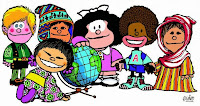This is how Christopher Columbus “discovered” America.
A brief story about Christopher Columbus and the discovery of America. A summary of what the books tell (and some facts they don't tell) about the arrival of Columbus to America, or what he believed were "Las Indias" (The Indies).
The journey lasted thirty-three days. Driven by the favorable winds from the east, the three caravels -the Santa Maria, the Niña and the Pinta- arrived on October 12, 1492 to the island of Guanahani -called "San Salvador" by Christopher Columbus, nowadays Watling Island, in the Bahamas- after the sailor Juan Rodríguez Bermejo, known as Rodrigo de Triana, gave the mandatory shout of "Land!" ("¡Tierra!"), earning the thousand maravedis that King Ferdinand had promised the first to see the coasts of Asia.
The admiral came ashore with the royal notary, the chaplain and the officers; then he knelt down, thanked God and with great pomp took possession of the island in the name of the Catholic Monarchs. Meanwhile, scattered groups of indigenous people, naked and seemingly harmless, watched the newcomers with curiosity.
Continuing the story of the discovery of America, Columbus would write: "They are so naive and so generous with what they have that nobody would believe it if they had not seen it. If someone wants something they have, they never say no; on the contrary, they invite share it and show as much affection as if your whole soul were in it...". These people were later identified as the tainos, an ethnic group disappeared some time later. Before them, the astonishment of the navigators was considerable, because they spoke a completely unknown language and belonged to a race that did not resemble any of those described in the books of explorers and former chroniclers, from Herodotus to Marco Polo. But it never occurred to anyone to think, of course, that those lands did not belong to Asia.
In Argentina, it was decided that October 12 would cease to be the Day of the Race to be called the Day of Respect for Cultural Diversity. In this regard, Uruguayan journalist and writer Eduardo Galeano wrote:
In 1492, the natives discovered that they were Indians,
they discovered that they lived in America,
they discovered that they were naked,
they discovered that sin existed,
they discovered that they owed obedience to a king and queen of another world and
to a god from another heaven,
and that god had invented guilt and clothing
and had commanded that he be burned alive who worshiped the sun and the moon and
to the earth and to the rain that wets it.
A curious fact about the story of the discovery of America: a legend says that Columbus was not the first European to reach the American continent, but before he, arrived the Templar Knights. Will it be true?
We also suggest you read:
The history of Columbus' eggThe tales of Jules Verne
Adventurers of yore: Allan Quatermain, by H. Rider Haggard
Source: Cristóbal Colón. Biografías y Vidas
Important warning - disclaimer: the contents published on this website are offered for information purposes only. They do not constitute didactic or educational material, nor do they intend to replace school texts or any other material used for educational purposes. The information contained in this website should not be used as reference material to study any subject of the school curriculum of any level.






